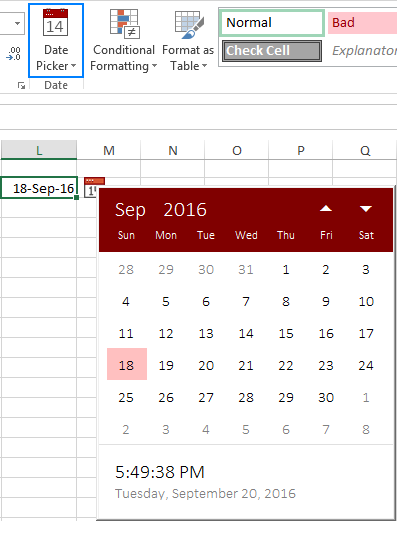
Saved in the Microsoft Windows® Register. Except for the DLL, if you choose COM Add-in, no other setting is See theĬonsists basically of only one file (ExcelCalendar.dll,ĮxcelCalendar.exe, or ExcelCalendar.xla) that can be installedĪutomatically using one of the installer package files availableīelow to download. It is programmed in Microsoft Visual Basic® for Application (VBA)Īnd optionally available as COM Add-in (dll),ĮXE Add-in (xla/exe), or Excel Add-in (xla), may be useful for Excel

To pick and count dates, may insert dates and date ranges (Date
MICROSOFT WORD DATE PICKER HOW TO
(For more complete discussion of how to create and use Quick Parts, click here.Utility generates a special popup calendar in Microsoft® Excel® If you don’t want to go through all the steps every time you want to embed that phrase in a document, select this phrase with your mouse, go back to Quick Parts, and choose Save Selection to Quick Part Gallery.
MICROSOFT WORD DATE PICKER UPDATE
Now you have a phrase that will update automatically. Go back to Quick Parts | Field and, choosing the same date field you chose before, simply remove the day reference from the date and insert a comma between the month and the year: Once we type the phrase “day of” we can insert a self-updating month and year. Simply type “*ordinal” after the “d” as shown below: To do that, we need to insert what is known as a switch. Next, we need to click Field Codes in the lower left-hand corner to get to the point we can format the day of the month as an ordinal number. The reason it doesn’t matter which of the date formats we pick is that we’re simply going to isolate the day of the month:


Once we’re in the Field dialog box, we need to pick one of the field names (here, I’ve chosen SaveDate) and click on one of the date formats (and it really doesn’t matter which one, for reasons that will become obvious later): To do this, we need to go over to the Insert tab, click on Quick Parts, and choose Field: When I say “ordinal,” what I mean is the day of the month expressed as an ordinal number, i.e., 1st, 15th, etc. We’ll get the hardest part of this out-of-the-way first: the ordinal date. It’s that last one, SaveDate, that I’ll use in this example, but you can use any date field for this trick. For example, you can insert the date the document was created, the last date it was printed, or the date the document was last saved. A lot of Microsoft Word users don’t know, however, that you can insert other system-based dates as well. You may have already had some practice with inserting a self-updating current date in, say, a letter or other document.

If you start drafting the document on the 15th but don’t actually file (or sign or whatever) until, say, the 21st or the 30th or, heaven forbid, sometime next month or year, you’re either going to have to leave blanks for the day, month and/or year while you’re drafting or remember to update all those dates when you finalize the document.īut what if you didn’t have to do either one? What if your document was smart enough to do its own updating, based on the date you saved it last? If your documents are anything like the ones I’ve worked on over the years, there’s at least one section (the “Respectfully submitted” or the Certificate of Service in pleadings or the notary acknowledgement, for example) that has this in it:


 0 kommentar(er)
0 kommentar(er)
